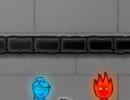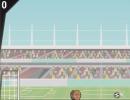Why a sewing machine? The sewing machine does not make stitches, does not sew. Problems with nylon threads
CARE AND MINOR REPAIRS FOR YOUR SEWING MACHINE
Very often, when sewing, there are problems with the sewing machine and many novice seamstresses do not know how to fix the problem. I will write about the most common causes of failure. For example, I take my working sewing machine (industrial, single-line). All machines are generally the same, whether they are household or industrial in design, and you will find identically similar parts on all of them. I do not take into account modern computer-controlled machines and breakdowns associated with the electrical part of the machine. And if you are still in doubt about choosing a sewing machine, then perhaps my article will help you with this.
? If the needle is in the machine, when working, it knocks on the fabric, like a machine gun fire.
answer– it’s just the tip of the needle that has gone astray or bent. In this case, you need to replace the needle.
For those who want to watch, my video on setting thread tension on my Typical industrial sewing machine.
? The bottom stitching is ugly, there are loops and loops (see photo 1 - sample).
answer– Upper thread tension is too weak. You need to check the top thread. This thread should run with slight tension. It can be changed using the upper thread tension regulator, indicated by an arrow (see photo 1). IN in this case you need to increase the tension until the loops “go away”. 
?
The top stitching is ugly, there are loops and loops (see photo No. 3 - sample). 
answer– the tension of the lower thread is too weak. The lower thread should come out of the bobbin case with a slight tension, which can be adjusted with small bolts (arrow photo 3, below). On household sewing machines there is usually one such bolt on the bobbin case, but I have two.
? During operation, the lower thread often breaks, especially at high sewing speeds.
answer– you need to make a fabric gasket in the bobbin case. To do this, you need to take a thin fabric and cut out a circle with a hole of the required size from it so that you can put it in the bobbin case (see photo 2). For better bobbin glide, you need to drop 1-2 drops onto the fabric. machine oil. If the thread begins to pull out of the bobbin case too tightly, then the gasket needs to be made of more thin fabric. 
? When working, the top thread often breaks.
answer– a very common cause in this case is a knocked down or blunt needle. It needs to be replaced. Check the top thread, it may come out too tightly from the bowls. Move the plates apart and see if there are threads stuck there or just loosen the tension on the top thread. Using an industrial machine, you can rub the moving edge (nose of the shuttle), marked in the photo, with sandpaper; perhaps there are jagged marks from the needle, which the thread clings to and then breaks (see photo 4). If the thread breaks often and on all types of fabrics and none of the above helps, then you need to show the machine to the master; perhaps you need to reconfigure the shuttle device. Without certain knowledge, I do not recommend doing this. 
? Sometimes the thread winder does not wind onto the bobbin. The bobbin spins, but the thread does not wind.
answer– if this happens on only one bobbin, then you can add threads so that the bobbin is more tightly located on the axis. If this happens to all bobbins, then you can use a screwdriver to slightly expand the gap on the axle (see photo 5). Then all the bobbins will fit more tightly. I would like to note that the thread from the spool should also go to the winder with a slight tension, which is changed with the tension regulator. 
? There are skipped stitches in the machine stitching.
answer– if this happens only on one specific type of fabric, then it is most likely that the machine does not “take” this fabric well. This often happens on knitted fabrics. To avoid this you need to use special needle for knitted fabrics with a rounded tip. This needle does not pierce the fabric, but simply pushes its threads apart. And also my advice, proven by experience. If the machine still makes gaps, then you can cut thin strips of paper, preferably tracing paper, and when sewing, put it under the machine stitching - there will be no more gaps. Then remove the paper.
Stitch skips can also occur if the thickness of the machine needle and thread is incorrectly selected.
The machine may also make mistakes due to a knocked down, dull needle. The needle needs to be replaced. If the machine uses a needle with round base, then you can slightly turn the needle to a different position (a little to the left or to the right) until it starts to sew well. In household machines, the edge at the base of the needle is cut off.
If none of the above helps and if there are gaps on all types of fabrics, then you need to show the machine to the master. The shuttle may need to be reconfigured.
? The machine does not advance the fabric well.
answer– you may need to clean the teeth; to do this you need to unscrew the plate. Another reason is that you may need to add presser foot pressure, and vice versa for large thicknesses.

SEWING MACHINE MAINTENANCE
In sewing machines with automatic oil lubrication, you need to monitor the oil level and do not forget to add it on time. When using the machine every day, you need to lubricate all the necessary places, according to the instructions.
More often you need to unscrew the plate and clean the teeth; lint often gets stuck there.
A household sewing machine is an indispensable assistant for a housewife. This little assistant can handle anything. Hemming trousers or a skirt, hemming the edges of curtains and even embroidering - all this is possible for a housewife if she knows how to use a sewing machine. But, unlike other household appliances, a sewing machine is a very capricious unit, sometimes it simply ends up sewing. In order for the device to be a reliable assistant for you, it is useful to know why it does not sew sewing machine. In this article we will analyze all the main malfunctions of such devices and give tips on how to eliminate them.
Main malfunctions of sewing machines:
- The presser foot mechanism does not feed material or feeds it poorly;
- thread break;
- the needle breaks;
- the fabric does not move;
- shuttle malfunction;
- The drive belt is loose.
The machine does not feed fabric well
This kind of malfunction occurs very often. When the machine operates correctly, the fabric should move without jerking, evenly, at the same speed. If this is not the case, then most likely the fabric feed mechanism is faulty. It happens that the cause of such a breakdown is the fault of the housewife herself, who, to speed up sewing, pulls out the fabric, helping the machine with her hands. As a result, the feed conveyor may malfunction. In addition, pulling the fabric with force can bend or even break the needle.

If the fabric feed mechanism is faulty, you will need to adjust it. The feed dog of the feed mechanism does not fit tightly enough to the presser foot, causing the fabric to slip. Adjusting the rack is quite a troublesome task, and in this case it is better to contact a professional adjuster. It happens that after prolonged use, the teeth of the feed rack become dull. To avoid this, do not allow the sewing machine to run idle without fabric.
Broken thread
There are a number of reasons why a sewing machine does not sew a stitch and breaks the thread. One of them is incorrect adjustment of the upper thread tension. The thread is simply overtightened and breaks when fed, not having time to follow the needle. To achieve proper operation, you must first completely loosen the upper thread regulator, and then, gradually increasing the tension, ensure that the machine operates correctly so that the thread does not break.

Another reason is a crooked needle. During operation, it may bend and touch the needle plate or the foot that presses the fabric. As a result, the thread catches on the edges and breaks. The Seagull sewing machine is especially susceptible to this. Let’s look at why other machines don’t sew further.
Often the thread can break, oddly enough, due to its quality. Threads for sewing machines and hand sewing or embroideries are noticeably different. For hand sewing - cotton, they have an uneven structure and feel velvety when used. If you put such threads in a sewing machine, they will quickly become frayed and tear. It is important to choose high-quality threads for sewing machines. They are thin and elastic.
The needle breaks
This is also a serious malfunction, due to which the sewing machine does not sew. Why does the needle break? There may also be several reasons. The first of them is the incorrect installation of the needle itself in the needle bar. If it is not inserted all the way, then during operation it may hit the shuttle and will inevitably break. The needle position must be constantly checked. If its fastening in the needle bar is loose, then you need to tighten it, after inserting the needle up until it stops.
Often needle breakage occurs due to incorrect selection. If, after sewing thin fabrics, you decide to sew denim fabrics with the same needle, this will inevitably lead to breakage. The needle must be selected according to the thickness and type of fabric. For coarser fabrics, there are special needles that differ in thickness and sharpening. There are also universal needles suitable for all types of fabrics. In addition, needles can break due to poor quality material from which they are made. Don't buy cheap needles from unknown sellers and you can avoid wasting money.
The shuttle is faulty or its adjustment is incorrect
Why doesn't the Podolsk hand sewing machine sew? Most likely this is due to the operation of the shuttle. The quality of these machines often depends on its condition. What malfunctions can there be? Dirt or moisture may get into the shuttle, then it may be difficult to rotate, and in some cases even jam. Because of this, a manual sewing machine does not sew. Why is this happening?

Long downtime of the machine
If you have not used the sewing machine for a long time, moisture may get into the hook, which will inevitably lead to corrosion. To avoid this, you need to periodically lubricate the machine, even if it has been idle for a long time. How to do this correctly is written in the instructions for your sewing machine.
It's another matter if dirt gets into the shuttle. This can happen, on the contrary, from long-term and continuous use of the machine. The threads you sew with are not perfectly clean; there may be dirt or dust accumulated on them. Together with the lubricant, all this forms a viscous mass, which clogs the shuttle. To avoid this, periodically the shuttle must be disassembled and cleaned, adding new lubricant.
Drive belt loose
Another reason why a sewing machine does not sew may be a loose drive belt. This can be noticed immediately after you turn on the machine and press the drive pedal. The motor may spin idle, but the machine will not sew. This can be easily fixed without calling a technician. You need to loosen a couple of bolts on the engine mount and move it down a little, checking the belt tension with your hand. Once it is tight, secure the engine in this position. Just remember to turn off the power to the machine before this operation.

If you have an old foot-operated machine, the above action will not work. These devices do not have a belt tensioner. In this case, the belt must be removed and shortened by approximately one centimeter. Then fasten it with a bracket and install it back. You need to remember that you can’t overtighten the belt either. This can cause the machine to run rough and lead to pulley failure.
This article provided basic answers to the question of why the sewing machine does not sew. Most breakdowns can be fixed on your own. But for things like fine tuning, it’s best to contact a technician or service center. There is no need to save where you can lose more.
Sewing machine malfunctions can be detected by external signs. For example, skipped stitches appeared or the upper thread began to loop at the bottom, or the sewing machine began to “knock” while working. Suddenly the fabric began to move poorly or the needle often broke, etc. It is much more difficult to determine the cause of the malfunctions that appear and even more difficult to eliminate them, to repair the sewing machine yourself.
In this video you will learn the reason for the expensive repair of a sewing machine caused by a broken toothed drive belt. You will also learn recommendations on how to avoid this sewing machine breakdown.
To make it easier for you to find a breakdown, we offer a brief overview of the main faults and the reasons for their occurrence, as well as a selection of site articles devoted to these issues. But, before you figure out why a sewing machine or overlocker does not sew or sews poorly, you need to make sure that this model of sewing machine is operated in accordance with its technical characteristics, including eliminating the use of materials, fabrics, threads, needles not specified in the passport or manufacturer's instructions. Let’s also agree that the threading is done correctly and other basic requirements are met, for example, the seamstress does not pull the fabric towards herself with her hand, etc.
1. Sewing machine malfunctions can be grouped into three groups

All emerging malfunctions and malfunctions in the operation of sewing machines can be divided into three main groups: violations of stitch formation; poor quality stitching; malfunctions in the operation of components and mechanisms.
Disturbances in the stitch formation process: skip stitches; stitch length instability; top thread breakage; broken bottom thread, etc.
Poor quality stitching: stitch landing; tightening the material in the line; "oblique" line; poor-quality trimming of fabric edges (overlock); poor-quality tightening of threads into a stitch (looping), etc.
Malfunction of machine devices and mechanisms: "heavy" movement of the machine; increased noise during operation; "jamming"; damage to the needle and other parts.
According to these three groups, we will consider possible malfunctions, from the point of view of the reasons for their occurrence, and, accordingly, ways to eliminate them. You can read the entire article, this information will not be superfluous for you. Or you can immediately find the group of reasons you need with detailed recommendations. At the end of each section there is a list of articles, to one degree or another, devoted to these malfunctions. It is important to understand that finding the causes of sewing machine malfunctions is intuitive. Various kinds of recommendations can only be used as a guide to the direction of the search. Experienced master does not use a “smart” book, he relies only on practice.
2. Reasons for violations of stitch formation in a line

Skipped stitches. The most common reason for stitch skipping in any sewing machine is the lack of a “confident” grip of the needle thread loop by the nose of the hook or loopers. Adjusting this parameter of a sewing machine always requires experience, especially with overlockers. The formation of a loop near the eye of the needle occurs when the needle is raised from the lower position by approximately 1.8 - 2.3 mm. The nose of the shuttle or looper should at this moment pass just above the eye of the needle and almost close to the needle blade. Since it is not always possible to perform high-quality settings for these parameters yourself, we only recommend checking them. This will allow you to determine that the cause of the skipped stitches may be due to another problem.
The occurrence of a skip may be influenced by the compensation spring.
Blunt nose of the shuttle.
When the thread number does not match the needle eye size (thread is too thick).
Large (broken) needle plate hole.
For thin fabric, a needle that is too thick is used.
The needle in the needle bar is loose.
The needle is not installed correctly.
The appearance of excessive play in the components and mechanisms of the machine.
Defective needle.
Broken upper and lower thread. The most common causes of thread breakage can be: thread abrasion; cutting thread with sharp edges of parts; thread rupture due to pinching, overlapping, etc. To detect places where the thread breaks, you need to inspect the entire route of the thread (you can use a magnifying glass). Probable causes of thread abrasion may be: the roughness of the thread guides and surfaces in contact with the thread in the area where it breaks; too much thread tension; decrease in the strength of the thread due to its unwinding. See also:
Reasons for skipping stitches on a sewing machine
Sewing stitch - thread breakage
Industrial sewing machine 1022 class
Sewing machine problems
Do-it-yourself repair and adjustment of overlockers
How does a sewing shuttle work?

Tight stitch. The stitching is pulled together most often due to excessive tension on the top thread and too little pressure of the presser foot on the fabric. First adjust the tension of the lower thread, then set the correct tension of the upper thread. The interweaving of the top and bottom threads of the stitch should be inside the fabric. Adjust the presser foot pressure so that when the presser foot is lowered and the teeth of the feed are raised (the needle is above the presser foot), the fabric can only be pulled out with noticeable force. A rough surface of the presser foot (worn out) can also cause the fabric to pull together in the stitching. The stitching will tighten if the worn teeth of the rack do not advance the fabric well. Therefore, it is not recommended to set the sewing machine in motion with the presser foot down and without fabric.
Fabric tightening. May occur when the fabric motor and needle malfunction. It is difficult to adjust such a breakdown on your own, but you can check it. The teeth of the rack should completely lower ("hide") at the moment when the needle almost approaches the needle plate (1.5 -2.0 mm).
Poor quality cutting of fabric with overlocker. Dull overlock knives do not cut fabric well, which leads to gaps and permanent stitch tightening. A characteristic dull knock when the overlocker is operating indicates that the knives and needle have become dull.
Poor quality stitching. The so-called “loop”, as well as oblique stitching, is formed due to excess top thread. As a rule, the reason for this is the appearance of roughness along the path of the upper thread or a violation of the shuttle stroke settings (Chaika sewing machine). See also:
Why does the line loop?
Sewing machine feet
Sewing threads, which ones are better?
How to thread a sewing machine
Seagull sewing machine
Setting up a sewing machine. Reika - fabric advancement
Overlock 51 class
4. Malfunction of the components and mechanisms of the sewing machine

Heavy running of the sewing machine. Most often this is caused by a lack of lubrication, clogging of the shuttle mechanism with tow, thread trimmings. Often, heavy running of the machine may occur after replacing the electric drive belt. A belt that is too tight makes it difficult for the sewing machine to rotate easily and causes parts to make noise during operation. Excessive tightening of fasteners and connections of machine parts also makes it difficult for them to rotate.
The sewing machine jams. Sewing machine jamming can occur after long-term storage of the machine. If the machine has not been used for a long time, it is recommended to lubricate it first, and then operate the sewing machine without thread for several minutes. Using the wrong oil will also cause the sewing machine mechanisms to jam. Some types of oils can dry out over time, especially when high temperature air. They turn from oil into glue, which most often becomes noticeable after a long period of “downtime”. Rarely, parts can break down, leading to malfunction of the machine.
Needle breakage. Needle breakage usually occurs due to inept seamstress work. The fabric should not be pulled towards you by hand. Correctly adjust the presser foot pressure on the fabric and the lifting height of the dog teeth, and you will no longer need to “help” the machine with your hand. When sewing coarse fabrics, a needle that is too thin is used. A needle is used that is not intended for this model of sewing machine. The needle is not inserted into the needle bar all the way. The needle is not centered on the plate's needle hole. See also:
Reasons for a broken needle on a sewing machine
Sewing machine lubrication
Electric sewing machine drive
Flywheel - Singer
How does a sewing pedal work?
How to replace an electric drive
This article contains all the typical and simple faults and repair methods for a sewing machine.
How does a modern household electric sewing machine work? Basic malfunctions of components and mechanisms.
This article contains expert advice on how to independently disassemble a modern household sewing machine from Brother, Janome, etc.
Such a “trifle” as winding thread on a bobbin often creates a lot of inconvenience when sewing. For some reason, it is not always possible to do this quickly and “without problems.” Let's figure out why it is sometimes difficult to wind thread onto a bobbin and what needs to be done to fix minor damage to the winder.
It's rare, but sometimes you can find foot-operated machines. The best solution, instead of repairing the foot drive, is to install an electric drive on the machine. This is not difficult to do and anyone with a screwdriver can install it with their own hands. But, if you still need recommendations on how to repair or adjust the foot drive, this article is at your service.
The main malfunctions and malfunctions of these sewing machines, as a rule, are not related to its adjustment. Sometimes it is enough to install the needle correctly, replace low-quality threads, select the correct tension of the lower and upper threads, and the machine will work perfectly again.
If the foot drive is, one might say, a complete antique, then the manual drive can be used, especially for beginners learning to sew. Read this article to learn how to repair this device yourself.
Sewing machine faults and problems It will be easier to fix if you understand how the sewing machine works and which part is used for what. Study carefully the structure of your machine according to the instructions or using our article.
Why did a modern household sewing machine suddenly start skipping stitches? The sewing machine repairman explains.
Surely everyone who more or less regularly uses a sewing machine has encountered this problem at least once. Now it would seem that I have checked the correct threading, and changed the needle, and cleaned the shuttle device, but the machine still skips stitches! Why does this happen and what to do in this case?
Let's try to find the reason for missing stitches when working on a sewing machine. The problem in most cases is as follows - the thread, lowered with the needle down, is not picked up by the nose of the shuttle, that is, as a result of any disturbances in the operation of the machine, a loop large enough cannot be formed that the nose of the shuttle could grab, and, accordingly, the stitch does not it turns out. Let's figure out what malfunctions can cause stitch skipping?
Why?
Firstly, good reason A skipped stitch may be caused by a needle that is not suitable for the type of work being performed, the type of material being processed, or in the end is simply bent or blunt. For example, when an excessively thick needle gets into a thread of fabric, it pulls it down and forms a loop that prevents the formation of a lap loop from the top thread.
Secondly, the sewing machine may skip stitches due to the sewing threads not matching the needle type and number. For example, with a thin needle and a thick top thread, an overlap loop may form on the opposite side of the needle, where the nose of the shuttle cannot pick it up.
Thirdly, the sewing machine often skips stitches when sewing elastic synthetic fabrics. If the fabric you are working with is stretchy, a thin needle will not be able to make a sufficient hole in it. When the needle passes through the hole in the needle plate, the fabric clings to it.
Fourthly, stitch skipping often occurs when transitioning from a thick to a thin section of a seam (for example, when hemming the bottom of a pair of jeans).
Fifthly, skipping a stitch can be caused by a mismatch between the movements of the shuttle and the needle.
What to do?
If your sewing machine starts skipping stitches, proceed as follows:
1. Check that the upper and bobbin threads are threaded correctly.
2. Loosen the upper thread tension.
3. Change the needle. An old needle can become dull, bent, or become covered with dirt as a result of long use. It is important to know what type of needle your machine is set for. All needles have their own markings and gauge; write down the markings of the recommended needles from the sewing machine instructions and then you can find on sale exactly what suits you.
When purchasing needles, you should choose the smallest appropriate needle gauge for your specific fabric. It is preferable to use a universal needle, or a needle with a medium or wide round point, or a finishing stitch needle. To sew elastic fabrics, choose special needles marked “stretch”.
The needle must be inserted into the needle holder correctly, until it stops. But in particularly difficult cases, it can be lowered a little, sometimes this method helps so that a sufficiently large loop can be formed from the upper thread.
4. Check whether it is installed level presser foot, sometimes you should increase its pressure (or even pull the nose of the foot down when sewing), as a result of which it will hold the fabric much better. This will prevent the needle from pulling the fabric down through the needle plate. It is preferable to use a straight stitch foot (with a small round hole). If you don't have a straight stitch foot, try moving the needle to the far right.
5. Use a needle plate with a small hole, if you do not have a needle plate with a small hole, then try to cover the wide hole part of the regular needle plate with adhesive tape.
6. Change sewing threads. Perhaps the threads you use have a high twist. Due to the strongly twisted thread, the overlap loop may immediately fold to the side when formed, which leads to a skipped stitch.
7. When sewing elastic synthetic fabrics, you can try to stabilize the fabric with a special water-soluble material; if this is not available, soak the fabric in a solution of gelatin or starch. You can place thin paper under the fabric, which should be carefully torn off when finishing sewing.
8. When moving from a thick to a thin section of a seam, use a special tool-foot for passing thick places. Some models of sewing machines have a special mechanism that simplifies the transition from a thin to a thick layer of material - carefully read the instructions for your sewing machine.
9. If none of the methods helped you, your sewing machine may be skipping stitches due to a mismatch between the movements of the hook and the needle. In this case the most The best way To fix the problem, call a sewing machine repairman. If you are ready to learn all the secrets of repairing a sewing machine yourself, A.I.’s book can help you. Zyuzin “Repair of sewing machines.”






